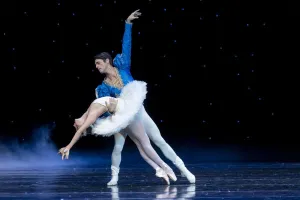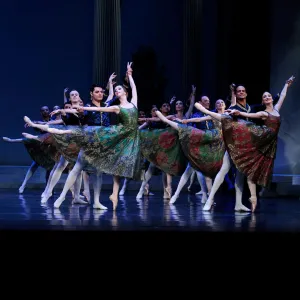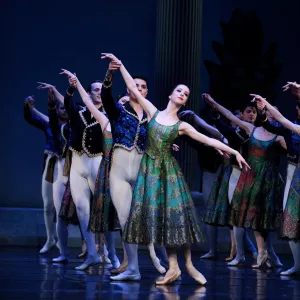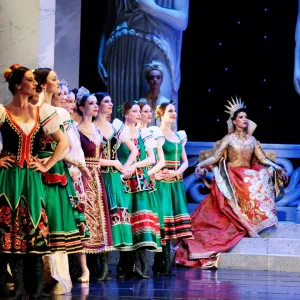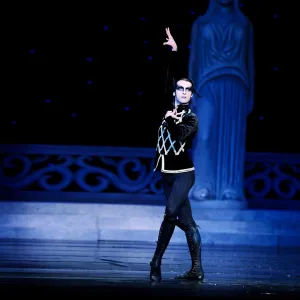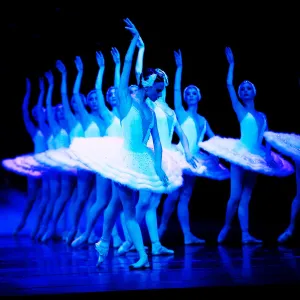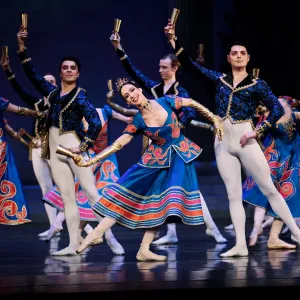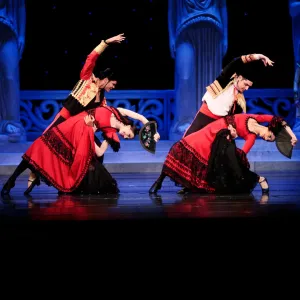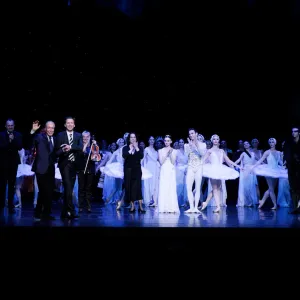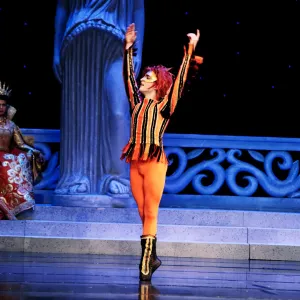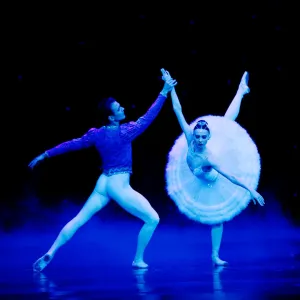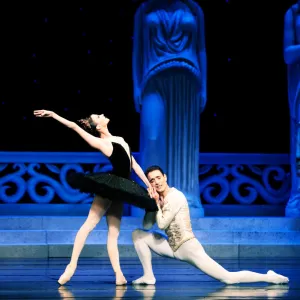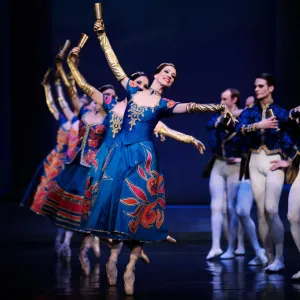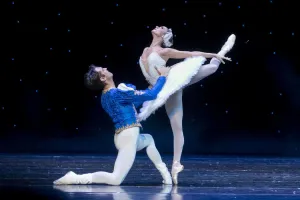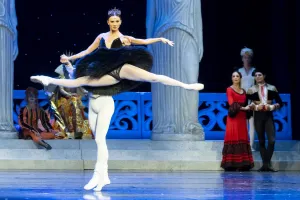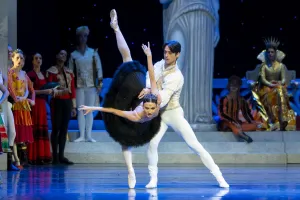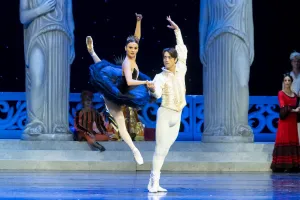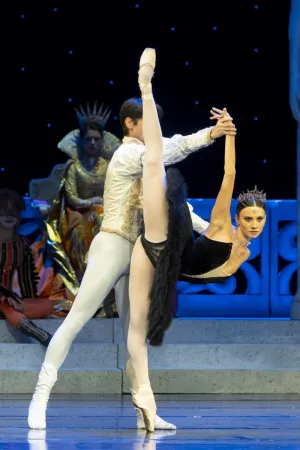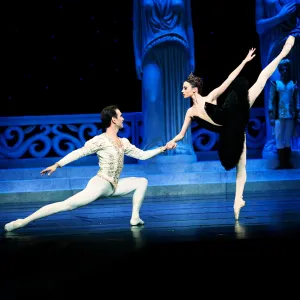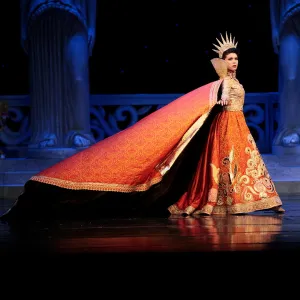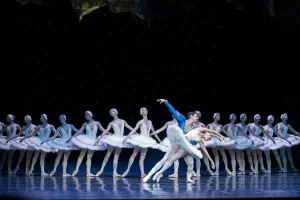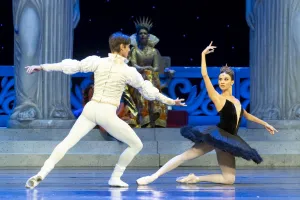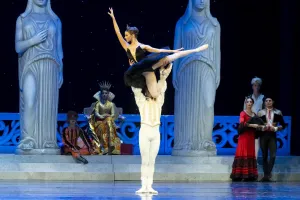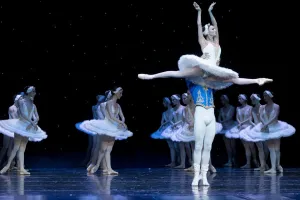Swan lake
ballet by Peter Ilich Tchaikovsky
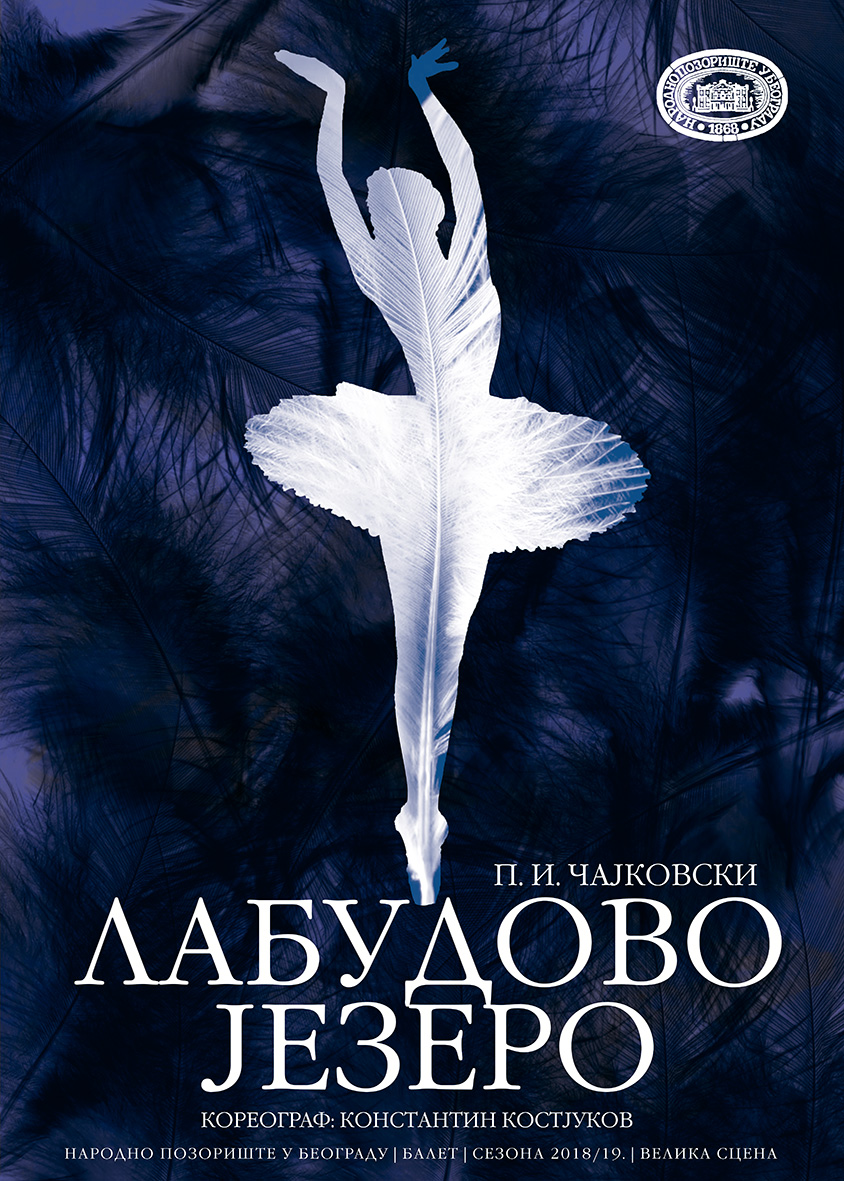
SYNOPSIS
Prince Siegfried is reading a legend about a sorcerer who is able to use his tremendously strong magic to turn beautiful girls, princesses, into swans and keep them on a secluded lake in a forest.
ACT ONE
Young people, courtiers, Prince’s friends, Wolfgang, his tutor, gather and begin dancing in the royal garden, while the court jester entertains the noblemen, and the ladies are having fun with their companions. The Queen tells Prince Siegfried that the time has come for him to choose a fiancée and that during the tomorrow’s Grand Ball, he will be able to choose his future bride from one of the girls present at the Ball. The Prince is disinterested, since he has never been in love. The dance lasts long into the night, but the Prince cannot hide his mixed feelings regarding the end of his bachelor life and freedom, which he enjoyed while being protected by his mother - the Queen. His coming of age and pending marriage represent the end of that period. At the same time, he fantasises about true and ideal love, but he has never met a girl who could fulfil his fantasies. While being disinterested in interaction with his friends, he notices a group of swans flying by far away. He decides to follow them.
ACT TWO
While following the swans, Siegfried finds himself deep in a dark forest. The swans perform astonishing dances on the lake shore, and his attention is drawn to one particular swan for its astounding beauty. During the night, the swans transform into girls and dance on the lake. Beautiful Odette, the queen of swans, shows herself in front of the Prince. She has been transformed into a swan by an evil sorcerer, together with many other girls. Because of the sorcerer’s spell, they can transform back into their human form only for a short time during the night. The spell can be broken only by true love, which would set the swan-girls free of the evil magic. The Prince becomes enchanted by Odette and promises his eternal love to her. Their courting has been witnessed by the evil sorcerer who was in hiding. When the morning comes, the girls turn into swans again. Prince Siegfried, determined in his newfound love, promises to save Odette from the evil spell and love her forever.
ACT THREE
At the Grand Ball at the court, Prince Siegfried has to choose a bride. Prominent guests from all over the world attend the ball, but Siegfried is nowhere to be found. The jester entertains the guests and they start dancing and show dances from their countries. The Prince arrives, but he is obviously distracted. He thinks about his findings from the lake and his Odette. Numerous beautiful girls never capture his attention and he does not want any of the girls his mother presented to him for his bride. Suddenly a stranger arrives to the ball. It is the evil sorcerer from the lake under the guise of Count Rotbart. His daughter Odile, who resembles Odette very much, is with him. Her father gave her the task to enchant and to seduce Prince Siegfried. The Prince believes that it is his Odette and he enthusiastically repeats his vow and promises eternal love, thus breaking his promises to Odette. Odile is now his bride to be. Rotbart is triumphant because his deception of the Prince is successful, and the Prince turned out to be disloyal. However, the Prince recognises that he has been tricked, so he goes on his own to the dark forest towards the enchanted lake.
ACT FOUR
Under the guise of darkness at the lake shore, Odette tells her friends, the swans, the sad story of betrayal and broken vows. Her hope for freedom has been lost forever. At that moment, Siegfried arrives. He has never broken his vows, because he saw Odette at the ball, not Odile. In his heart, it is she whom he swore to love. Deception of the evil sorcerer was not successful and he arrives to the lake throwing thunders and lightning on Siegfried, trying to kill him. The Prince’s pure love toward Odette cannot be broken and he fights for her bravely and wins against the sorcerer. The sorcerer’s magic is dispelled and Odette, accompanied by her friends, forever leaves the lake to live happily with Prince Siegfried.
150 YEARS
As one of the best-known and most frequently performed ballets in 19th century, to the music of P. I. Tchaikovsky, Opus 20, had its world premiere in the Bolshoi Theatre in Moscow in 1877. Choreography was designed by Julius Reisinger, after the libretto written by Vladimir Petrovich Begichev, Director of the Moscow Imperial Theatre. Inspiration for the new ballet was found in The Stolen Vail, written by German writer Johann Karl August Musäus in 18th century. Swan Lake is the first of three ballets composed by Tchaikovsky. He also wrote music for The Sleeping Beauty (1889), The Nutcracker (1892) and several suites for one-act ballets. Marius Petipa, together with Lev Ivanov, created anthology version of the ballet in 1895, which has been preserved to this day in its directing and choreography segments.
METAMORPHOSIS OF THE SWAN
1877 – Moscow, Russian Imperial Ballet Theatre. World premiere of Swan Lake, to the music of Peter Ilyich Tchaikovsky. Choreography: Julius Wenzel Reisinger. Libretto: Vladimir Begichev, a dramaturge and an intendant of Moscow theatres’ repertoire, and Vasily Geltser, a dancer. The premiere was a failure.
1880 – Moscow. New version of Swan Lake. Choreography: Joseph Hansen.
1888 – Prague, National Theatre. First staging of Swan Lake outside of Russia. Choreography: Augustin Berger. Performance of only the second act with the composer in attendance.
1892 – St. Petersburg, Russian Imperial Ballet. Premiere of P. I. Tchaikovsky’s ballet The Nutcracker. Choreography: Lev Ivanov, according to the idea by M. Petipa.
1893 – St. Petersburg. New, full-length, version of Swan Lake. Choreographers: Lev Ivanov and Marius Petipa. Petipa proposes a completely new concept for the second act to Ivanov and has Ivanov design the act.
1894 – St. Petersburg, Marynski Theatre. A year after Tchaikovsky’s death, during the evening dedicated to commemoration of the composer, there was a performance of the second act of the Swan Lake. The role of Odette was interpreted by Pierina Legnani. It was a tremendous success for the choreographer and the ballerina.
1895 – St. Petersburg, Marynski Theatre. First performance of integral version of Swan Lake, choreographed and directed by Lev Ivanov and Marius Petipa. This version would become basis for all later versions, including the contemporary interpretations of the famous ballet choreography.
1901 – Moscow, Bolshoi Theatre. New version of Swan Lake, choreographed by Alexandar Gorsky. Significant improvement regarding implementation of symbols and regarding introduction of classic ballet academism.
1911 – London, Sergei Diaghilev’s ballet company Les Ballets Russes performs Swan Lake, choreographed by Mihail Fokin, after Ivanov and Petipa. Main roles were interpreted by Matilda Kshesinskaya and Vatslav Nijinsky.
New York, Metropolitan Opera. Mikhail Mordkin’s troupe performed the first American premiere of Swan Lake.
1912 – Monte Carlo. Premiere of Swan Lake in interpretation of Sergei Diaghilev’s Les Ballets Russes.
Rene Blum’s troupe – Ballet Russes de Monte-Carlo – resumes performing this ballet regularly, however always in shorter version.
1920 – Moscow, Bolshoi Theatre. Alexander Gorsky staged a new version of Swan Lake, in cooperation with Nemirovich-Danchenko and added to it a novelty - character of the Fool. This version lasted for a long time on Moscow’s stages.
1921 – Moscow, Bolshoi Theatre. New version by Asaf Messerer, which had a great influence on later productions.
1925 – Belgrade, National Theatre. The National Theatre presents the full-length production of Swan Lake, choreographed by Aleksandar Fortunat.
1933 – Leningrad, Kirov Theatre (Marynski). After 38 years, a version by Petipa-Ivanov was replaced with a new one by Agrippina Vaganova and Vladimir Dmitriev. The original scheme and the second act by L. Ivanov remained the same, but a character of Beno was omitted.
1934 - London, Vic-Wells Ballet. First production of the full-length version of Swan Lake in Great Britain. Choreography by Nicholas Sergeyev, after the version by Petipa-Ivanov.
1936 – Paris, Opera House. Serge Lifar presented to the Paris audience his fragmental version of Swan Lake.
1945 – Leningrad, Kirov Theatre. Premiere of the production choreographed by Fedor Lopukhov, after the version by Petipa-Ivanov.
1951 – New York, New York City Ballet. Production of the second act, choreography: George Balanchine.
1953 – Moscow, Stanislavsky and Nemirovich-Danchenko Music Theatre. Vladimir Bourmeister designed a new version that is still on the repertoire of this theatre.
1960 – Bourmeister staged the same version for the Paris Opera Ballet. This was the first French company to produce this ballet after the original score.
1963 – Stuttgart, Wurttemberg Ballet. John Cranko’s dramatization highlighted the role of Prince. A great number of modern choreographers accepted his approach to dramatization.
1964 – Vienna, State Opera Ballet. In his version, Rudolph Nureyev also highlighted the role of Prince.
1966 - Toronto, National Ballet of Canada. In his version, Erik Bruhn highlighted the negative character of Count Rotbart.
1969 - Moscow, Bolshoi Theater. Yuri Grigorovich presents a new version of Swan Lake. The second and the fourth acts were taken from the version by Petipa-Ivanov. Dances of the third act were danced on the toes.
1976 – Hamburg. John Neumeier stages Swan Lake in the style of contemporary dance expression for the Hamburg Ballet Theatre.
1987 – Stockholm, Cullberg Ballet. Mats Ek changes the libretto and modernizes the dance technique, thus making a radical turn from traditional interpretation.
1996 – London. Mathew Bourne reforms the performance regarding directing and conceptual form based on the original score. The second and the fourth acts were set for male dancers only. French choreographer Roland Petit, in the National Ballet of Marseille poeticized male swans’ dance, thus reorganizing the original score.
Although approaching its 150th anniversary Swan Lake, as a ballet paradigm, remains original and fresh enough to bear the epithet of the most famous ballet performance; at the same time, it made the art of ballet much more appealing. Despite the fact that it had left royal theatres, Swan Lake kept its “elitism” regarding its academic “purity” and virtuosity of performers, dancers and musicians alike, and remains everlasting inspiration both for the artists and the audience.
Miloš Dujaković
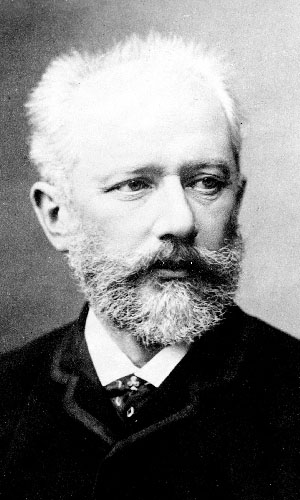 PETER ILICH TCHAIKOVSKY
PETER ILICH TCHAIKOVSKY
(1840 - 1893)
”One can not say what is the most admirable thing in Tchaikovsky’s work: the symphony value of his ballets, their dancing qualities or the strength of expression and emotion. They are real dancing dramas.”
Serge Lifar
While searching for vivid, real dramatics and psychologic truth in opera, Tchaikovsky thought that ballet art was represented by fantasy of a fairy-tale. In this sense Tchaikovsky follows the line of the romantic ballet that is based on numerous fantastic scenes and theatrically-expressive effects. He has creatively understood and approached the problem of ballet, therefore reforming the traditional basis of this genre. Tchaikovsky followed two main lines in developing style characteristics of the romantic ballet. First of all, he has made the pure choreography principal by extraordinary elastic and characteristically diverse. Tchaikovsky renovates the already known types of dance giving them extraordinary freshness and abundance of rhythmic and music plasticity, and, at the same time, showing a great talent for finding out the characteristic forms of dance movements of modern French ballet, and, especially, the art of Delibes, whom he appreciated very much. Another Tchaikovsky’s novelty in the area of ballet music was the development of symphony mime elements. Tchaikovsky has shown the way to ballet symphonization, the path later followed by Glazunov and Stravinsky in Russian music, and, in France, by Ravel and his followers.
Tchaikovsky is probably best known for his ballets which he composed in his mature years and those ballets brought him the recognition of his contemporaries.
• 1872 Swan Lake – op.20 – his first ballet performed at first with some shortcomings (faults) which would be straighten out later on. First performance in the Bolshoi Theatre.
• 1890 The Sleeping Beauty – op.66 – Tchaikovsky himself thought this ballet to be his best. First performance in Mariinsky Theatre in Sankt Petersburg.
• 1892 – Op.71 – The composer was not terribly pleased with his last ballet.
• Tone poem Francesca da Rimini, op 32 . It was composed in Bayreuth in the autumn of 1876, in a very short period of time, inspired by the episode from Dante’s The Divine Comedy
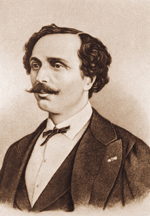 MARIUS PETIPA
MARIUS PETIPA
(1818 – 1910)
Marius Petipa is one of the best-known individuals of the ballet art of all times. He is the author of the classical ballet academism, a ballet style which delights audience and ballet artists with its strict, yet beautiful and virtuosic forms. Marius Petipa was born in Marseilles in 1819, into the family of artists. His father, Jean Antoine, was a dancer and ballet master, while his mother, Victorina Gasso, was an actress. His older brother, Lucien, was the leading dancer at the Great Opera in Paris and later, a well-known French ballet master. Petipa started his career as a dancer, first in France, then Spain, and in 1847 he came to Russia where he stayed till his death, in 1910. He worked for 56 years in the Marynski Theatre in St. Petersburg, first as a dancer and then as a choreographer. He staged forty-six original ballets, synthesizing the achievements of the ballet art of the 19th century, which he enriched with his extraordinarily creative imagination. His most famous ballets are: Don Quixote (1869) and La Bayadere to the music by Ludwig Minkus, followed by famous ballets by P. I. Tchaikovsky, The Sleeping Beauty (1890) and Swan Lake (1895), in collaboration with Lev Ivanov, and Raymonda by A. K. Glazunov. Petipa took part in creating the ballet The Nutcracker by Tchaikovsky and Ivanov, for which he wrote libretto based on well-known Hoffmann’s Tales. During his very first season in Sankt Petersburg, in 1847, Petipa staged his version of the ballet Paquita (the world premiere was a year before in Paris), and in 1881 he created practically the entire new choreography and within it a very popular and gladly performed “Grand pas classique” to the music of Ludwig Minkus. Melodiousness and rhythm of the music enabled Petipa to create almost faultless choreography – an example of remarkably imaginative course of choreographer’s ideas, directed at pointing out brilliant virtuosity of classical ballet academism. The basic characteristics of this style of artistic dancing are strictness and precision of dance forms, elaborate system of movements, both beautiful and effective, where everything is determined and appropriate. The aim of that system of movements is to enable a body of a performer- through hard and disciplined practicing- to be shapely built and plastic and to become the first-rate instrument which will be used by a dancer and a choreographer to express fairytale-like ballet contents. Historians of artistic dance think that the action of the best Petipa’s ballets is well thought of, clear and whole, that his imagination is inexhaustible, and that his means of expression are strictly selected and deliberate. Even the superficial insight into his creations kept till today, brings us to the conclusion that the soloists’ sections and great classical duets are the most precious legacy that Petipa left for future generations of ballet artists. The fact is that the classical ballet is considered to be the basis of a versatile dancing education, and that the most valuable classical ballets and parts of them represent the framework of the repertoire of ballet companies throughout the world. They have been gladly watched and, doubtlessly depending on the technical abilities of performers, successful with audiences. It is perfectly clear that creative opus of Marius Petipa, a choreographer and a ballet master, is of utmost importance for these successes.
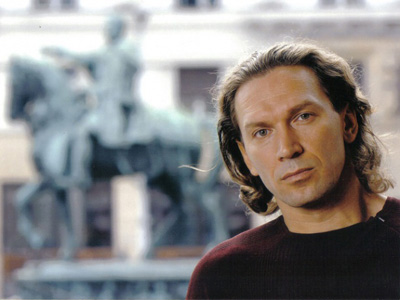 KONSTANTIN KOSTYUKOV
KONSTANTIN KOSTYUKOV
Choreographer
Upon finishing his ballet training in Kiev, he was engaged in the Ballet of the National Ukrainian Opera Theatre, where he received a title of a ballet soloist in 1987.
In 1991, he was engaged in Ballet Company of the National Theatre in Belgrade as a principal dancer and the same year he won the first place in IV Osaka International Ballet Couple Competition in Japan Kostyukov graduated from the Department of Pedagogy and Choreography at the Ukrainian International Theatre Institute in Kiev in 2001. He interpreted numerous leading roles with much success in Belgrade: Don Quixote (V. Logunov), Swan Lake (D. Parlić), Giselle (L. Lavrovsky), Samson and Delilah (L. Pilipenko), The Sleeping Beauty (V. Logunov), Resurrection (L. Pilipenko), Carmen (V.Logunov), The Lady of the Camellias (L. Pilipenko), Scheherazade (L. Pilipenko), The Fountain of Bakhchisaray (R. Klavin), A Woman (L. Pilipenko), The Rite of Spring (D. Seyffert), Wolves (D. Seyffert), Autumn Rain (V. Logunov), Images (L. Pilipenko), Romeo and Juliet (A. Šekera), Dr Jekyll and Mr. Hyde (V. Logunov), Tchaikovsky the Poet (L. Pilipenko), Odysseus (L. Lambrou), Queen Margot (K. Simić), Autumn Flowers (M. C. Pietragalla), The Impure Blood (L. Pilipenko), Isidora (J. Šantić) 1992.
Dancer-flyer as critics quoted him, Kostyukov has also interpreted numerous roles as a guest artist: in Novi Sad – Zorba the Greek (K. Simić), Carmen Suite (V. Logunov), Mayerling (K. Simić); in Skopje – Schubert (T. Schilling), Macedonian History (O. Milosavljeva), Swan Lake (E. Aksionova), The Nutcracker (M. Krapivin), Forceful Man Dies Twice (J. Slaneva-Hadžimanova), Don Quixote (V. Budarin), Giselle (R. M. Bot); in Chamber Opera House Madlenianum – Orpheus in the Underworld (K. Simić), Nijinsky (K. Simić), The Traveler (V. Logunov). He has been performing abroad in prominent festivals as well. Kostyukov worked as an assistant choreographer in ballet productions of Wolves by Dietmar Seyffert and Romeo and Juliet by Anatoli Šekera. Kostyukov choreographed the following productions: Aida in the Timisoara Opera in 2003, Aida in the National Theatre in Belgrade in 2013, The Nutcracker and Romeo and Juliet in the Serbian National Theatre in Novi Sad in 2014, The Nutcracker in the National Theatre in Sarajevo in 2017. There have been numerous awards Kostyukov won in his prolific career, some of them are, Awards of the National Theatre in Belgrade for his roles in Swan Lake, 1991, Don Quixote, 1992, and Scheherazade, 1994; followed by the Award of the Federal Ministry of Culture for artistic achievement in 1995; Award “Davidoff” for contemporary theatre expressions in 1989; “Golden Ring” Award in 2003; Vuk’s Award in 2007; BK Award in 2015; Award “Anatoli Sekera” of the International Theatre Institute of Ukraine in 2002 for best dancer of the season.
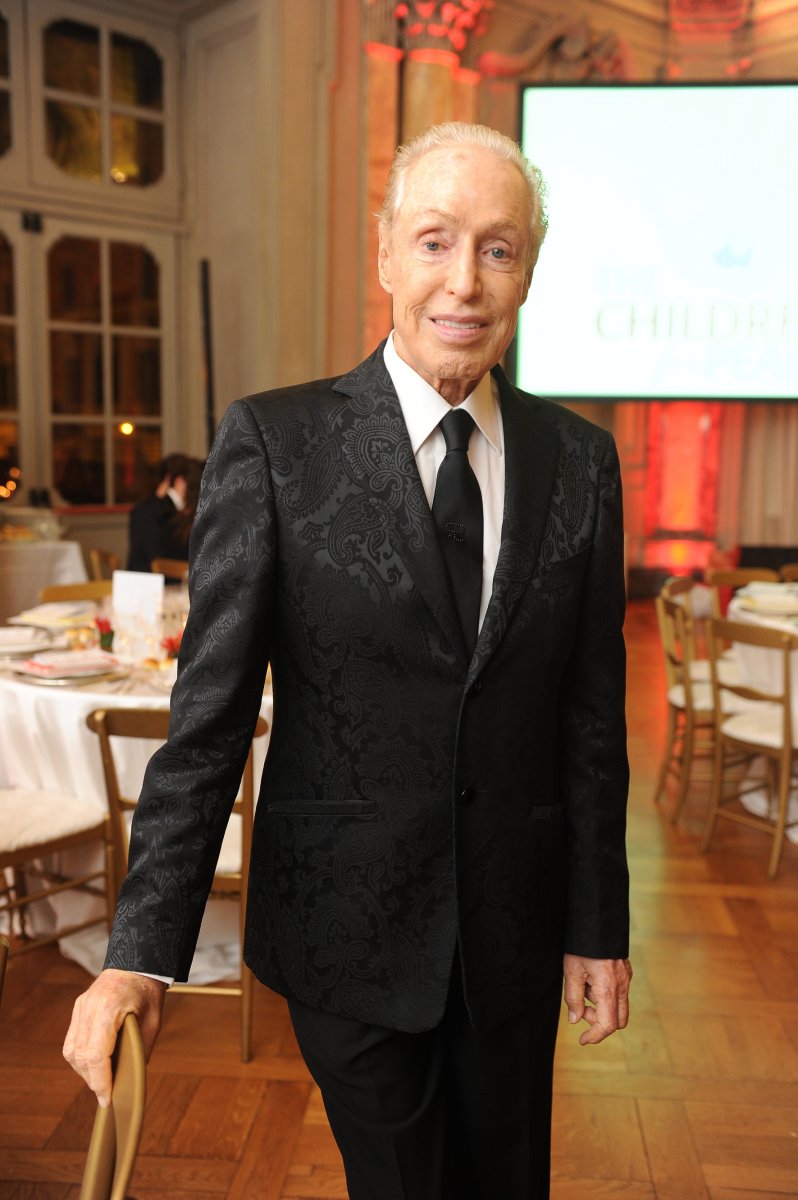 RENATO BALESTRA
RENATO BALESTRA
Renato Balestra is one of the most renowned high fashion designers in fashion industry. It has been said that fashion chose Renato Balestra, not the other way around. His career has been stellar ever since he started as a young fashion designer. From the moment he created his own label and opened his atelier in Rome, centre of high fashion, he became internationally successful. He designed clothes for the most elegant women of the world. Balestra had his collections shown throughout the world with unprecedented success. He won numerous distinguished recognitions in fashion worldwide. His clients were, among others, Iranian Empress Farah Diba, the Queen of Thailand, Jordan Princess and many first ladies, queens, princesses, etc. Renato Balestra designed clothes for famous Hollywood actresses, as well for Italian and international divas. Since music, especially opera, is one of his passions, he designed costumes for opera and theatre. Among his costume design projects is the 1998 production of Rossini’s Cinderella in the National Theatre in Belgrade. It has been said that, among other things, his costume design has contributed to the popularity of this production for the entire time it was on the repertory. Balestra has designed uniforms for Alitalia and other airlines. His courage and extraordinary style, traditional and modern… are the things that have inspired him and made him one of the most renowned fashion gurus of the world, who “urns everything he touches into style.
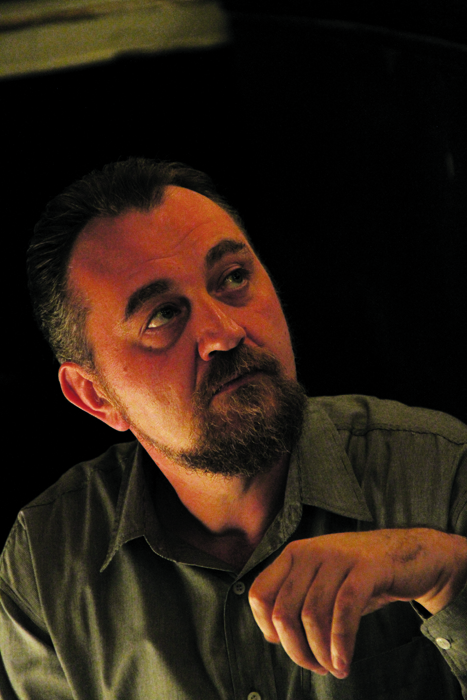 ĐORĐE PAVLOVIĆ
ĐORĐE PAVLOVIĆ
Đorđe Pavlović was born in 1965 in Loznica. He obtained his BA and MA degrees in conducting at the Faculty of Music Art in Belgrade in the class of Professor Jovan Šajnović. Pavlović has been working in the National Theatre Opera since 1992, where he conducted in operas The Bat, The Barber of Seville, The Troubadour, Traviata, Rigoletto, Attila, Nabucco, Don Carlos, Adriana Lecouvreur, La Boheme, Eugene Onegin, Melancholic Dreams оf Count Sava Vladislavić and ballets The Sleeping Beauty and The Taming of the Shrew. In period 2000 – 2006, with the Choir of the Opera, Pavlović staged first productions of three comprehensive pieces, Heavenly Liturgy, Liturgy of St. John Chrysostom, and Holiday Evening Service by Svetislav Božić. Besides his work on operatic repertoire, he has been very active in concerts in our country and abroad, where he was engaged in promotion of Serbian music. Some of his performances outside the country were with the Ukrainian Radio Orchestra at Kiev Music Fest, as well as with Oxfordphilomusica Orchestra at the concert in Regent Hall in London. He has been a permanent guest conductor of State Symphony Orchestra from Zaporozje; besides giving numerous concerts with the Orchestra, he also produced a CD with them. Since May 2006, he has been working as a head conductor in Borislav PašćanYouth Philharmonic. He gave numerous concerts with the Youth Philharmonic and won the Gold Plaque of Kolarac’s Legacy Award, at the celebration of 130th Anniversary of the cultural institution (in 2008), and Golden Ring of the Cultural and Educational Community of Serbia for his permanent contribution to culture (in 2009). He belongs to a generation of Serbian conductors who focus their spiritual and artistic growth on incessant source of national music by enriching their repertoire with pieces of spiritually similar music cultures.

